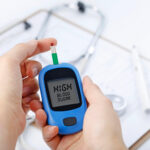
Type 1 diabetes is a chronic autoimmune condition where the pancreas produces little or no insulin, a hormone necessary for regulating blood sugar. Without sufficient insulin, glucose accumulates in the blood, leading to high blood sugar levels, which can eventually damage the kidneys, eyes, heart, and nerves
Screening and Diagnostic Tests
There are several methods to screen for and diagnose type 1 diabetes, primarily involving the measurement of blood sugar levels. While these tests are quick and straightforward, they cannot differentiate between type 1 and type 2 diabetes. For accurate diagnosis, healthcare providers typically use additional tests.
Confirmatory Tests for Type 1 Diabetes
To confirm type 1 diabetes, healthcare providers may use:
- Autoantibody blood test: Detects specific antibodies that indicate an autoimmune response against the pancreas.
- Ketone blood or urine test: Measures ketone levels, which are byproducts produced when the body burns fat instead of glucose.
Medical History and Symptoms
Healthcare providers will take a comprehensive medical history to understand the onset and nature of symptoms. Type 1 diabetes can be diagnosed at any age but commonly appears between ages five and puberty. A family history of type 1 diabetes is also significant in the diagnosis process.
Common Symptoms
Symptoms of high blood sugar (hyperglycemia) include:
- Excessive thirst (polydipsia)
- Frequent urination (polyuria)
- Fatigue
- Unintentional weight loss
- Slow-healing wounds
Diabetic Ketoacidosis (DKA)
If diagnosis is delayed, some individuals may present with diabetic ketoacidosis (DKA), a serious complication characterized by:
- Fruity breath odor
- Nausea, vomiting, or stomach pain
- Rapid breathing
- Confusion or sluggishness
DKA is a medical emergency and requires immediate treatment to prevent severe health issues.
Glucose Blood Tests
Various glucose blood tests are used to diagnose diabetes:
- A1C Test: Measures the percentage of hemoglobin in red blood cells that has sugar attached, reflecting average blood sugar levels over the past three months.
- Normal: Less than 5.7%
- Prediabetes: 5.7% to 6.4%
- Diabetes: 6.5% or higher
- Fasting Blood Sugar Test: Measures blood sugar after an overnight fast.
- Normal: 99 mg/dL or lower
- Prediabetes: 100 to 125 mg/dL
- Diabetes: 126 mg/dL or higher
- Random Blood Sugar Test: Measures blood sugar at any time, without fasting.
- Diabetes: 200 mg/dL or higher
Ketone Test
When the body cannot use glucose, it begins to burn fat for energy, producing ketones. Excess ketones can make the blood acidic, a condition known as DKA. This test checks ketone levels using a urine or blood sample.
Autoantibody Testing
While glucose tests confirm diabetes, they do not specify the type. Autoantibody testing helps identify type 1 diabetes by detecting proteins produced by the immune system that attack pancreatic beta cells. These autoantibodies are present in type 1 diabetes but not in type 2.
Summary
A thorough examination, including glucose and autoantibody tests along with symptom assessment, is essential for an accurate type 1 diabetes diagnosis. Proper diagnosis ensures appropriate treatment and management to prevent complications.
- Family History: A strong family history of type 1 diabetes can significantly increase the risk.
- Regular Monitoring: Continuous monitoring of blood sugar levels is crucial for managing type 1 diabetes.
- Technological Advancements: Devices like continuous glucose monitors (CGMs) and insulin pumps have greatly improved diabetes management.
A Quick Review
Type 1 diabetes is a chronic autoimmune condition where the pancreas fails to produce sufficient insulin, leading to high blood sugar. Common symptoms include excessive thirst, frequent urination, fatigue, and unintended weight loss. Key diagnostic tests include A1C, fasting blood sugar, random blood sugar, autoantibody, and ketone tests. Early diagnosis and treatment are crucial to prevent complications such as diabetic ketoacidosis (DKA).











